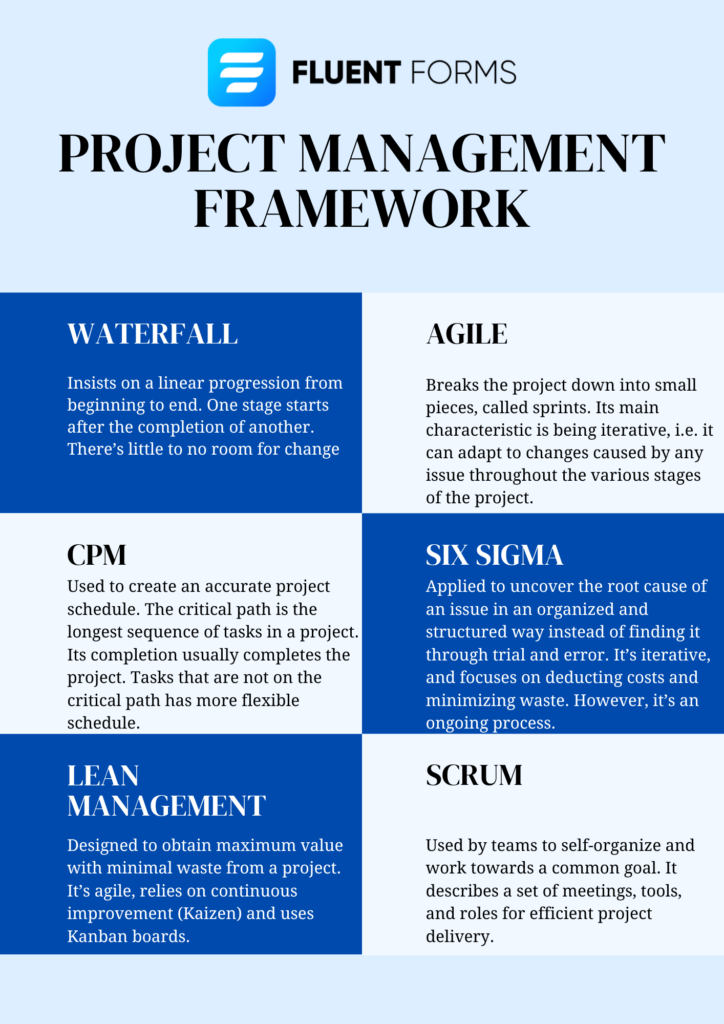How to Track Project Progress Effectively & Deliver on Time

Your company just landed a big project, and you’re the best fit to manage it. Successfully completing this project will add enormous value to your company. Therefore, you can’t afford to fail at any aspect of the project. However, you’ve never managed a project of this scale before. Now you’re agonizing that you might lose track of time or resources and can’t deliver the project on time.
The good thing is that you can learn how to track project progress to be free from this concern. Here, we’ve listed the essential tips that’ll allow you to track your project’s progress like a GPS tracker once it is in motion. And you’ll never even have to worry about deviating from your carefully crafted project plan.
Let’s see how you can track your project progress and use that to deliver the project on time without any further delay.
Why is tracking progress important in project management
If you don’t track your progress regularly, you might even fail to deliver the project on time or within budget. What’s worse, you won’t even know it until you’re very close to your deadline and have burned through all the resources, but the project is nowhere near finished.
Tracking progress is important because it lets you know if you’re moving in the right direction with your project. It further tells you how close you are to achieving your goals. Here are some reasons you should track your project’s progress side by side as you execute it.
Data-informed decision-making
The data obtained during a project may require the project plan to change for the better. In that case, if you don’t check and process your project data regularly, you might miss it and continue with the initial plan.
Moreover, tracking project progress might provide you with new actionable insights. It can unlock doors to new perspectives. With that, you can locate risk factors to mitigate or possible opportunities to take advantage of.
You might find that the same resource can serve more than one purpose, and that will save you from wasting resources. You can instead figure out how to utilize shared resources efficiently. The project data can also tell you that you might achieve additional benefits from the project that your initial objectives don’t cover. Assessing progress regularly allows you to take advantage of those possible benefits.
Quality management
Ensuring the quality of the result of a project is crucial for the project’s success. The reputation of your business depends on the quality of the products and services you deliver. Unless you assess the quality at a regular interval during production, you might not be able to ensure the quality of the final product or service when the project is complete.
Time management
Another important reason why you should track the progress of your projects is to see if they are on schedule. When you reflect regularly and there’s a minor deviation from the planned schedule, it can be adjusted without much trouble.
However, if you do not track progress regularly, you might find out you’re too far behind your schedule when it’s too late to rectify the situation.
Budget management
When you plan your project, you allocate an estimated amount of resources for it that seems reasonable. This resource is for completing the whole project. However, if you don’t measure progress regularly, your team can use up more resources without knowing that they’ll run out before the project is over.
In that scenario, bringing in more resources can take a toll on your profit. And if you can’t afford additional resources, your project can fail. And if the project fails midway, the resources and time already used become a waste.
13 Tips on how to track project progress
Now that you know why tracking project progress is essential for the successful completion of a project, let’s see how you can track project progress and every aspect of it with ease.
1. Define clear and realistic goals
The process of tracking your project’s progress starts even before you start running the project. You pave the way to track your progress in the planning stage so that tracking becomes smoother and more efficient.
Make sure to set SMART (specific, measurable, attainable, relevant, and time-bound) goals for your project. Setting SMART goals makes it easy to measure progress. It also ensures everyone on the team is working towards some specific goals and there is no confusion.
2. Set measurable deliverables and milestones
Divide your project’s goals and objectives into measurable deliverables and milestones. If a certain objective is broken down into 4 milestones, then achieving each milestone takes you one step closer to achieving that objective. After crossing each milestone, you can also measure what percentage of the work’s been done.
3. Focus on effective communication
The most important tip for effective communication is, “Don’t assume that a message has been conveyed; make sure instead.” Even if it takes longer to cross-check that you’re clear with your teammates, it saves you the hassle of them misunderstanding you.
Unless you communicate efficiently, project data and updates will be lost in communication glitches. This will lower your chances of tracking project progress correctly.
Therefore, make sure both parties are on the same page when communicating something, be that an update, a report, or a change of plan. If possible, double-check the data you receive from your teammate before making a decision based on it.
4. Conduct regular project update meetings
You should meet with your team about the project updates while they’re still fresh. Since many decisions depend on the updates, delaying these meetings might delay the progress of the project.
In the meetings, reflect on where you were supposed to be in the project by that time vs. how far you actually came. If something is not going according to plan, try catching up with it sooner.
Brainstorm and make decisions as a team in the meetings based on the updates, and ensure everyone is clear on the next steps.
5. Measure qualitative progress using clients’ feedback
Update your client regularly about the progress and ask for feedback. If there is something your team has missed, chances are your client will be able to identify it.
Fix the issues your client raises immediately to ensure quality. Because delaying might hinder the following steps and even cost you more.
6. Use a checklist
Use a checklist to measure the different aspects of your project. You can have a weekly to-do list where you list everything that needs to be done in a week. At the end of the week, you can revisit the list and check the tasks you’ve completed.
7. Use the right project-tracking tools
A project tracking tool is the ultimate weapon to make project tracking as smooth as possible for you. First, the tools keep accurate records. Second, since you update the data for everyone to see, the chances of miscommunication are very low.
However, don’t assume that updating the information on a tool covers face-to-face communication. Hold regular meetings, explain the updates to team members, analyze them together, and decide next steps.
8. Establish clear project and task deadlines
If you only set a deadline for the project and not for individual tasks, it might cause you to lose track of time when you’re starting the project. This way, the tasks in the initial stages can take way longer than the time allocated for them.
To avoid this crisis, set a deadline for each task according to its priority and complexity. Try to complete each task by its deadline. If a task gets delayed, make it a priority to complete it as early as possible. This way, the tasks depending on it, will be on their timeline as well.
If the individual tasks are completed on time, this makes tracking progress really easy for you because you know that you’re on schedule. It also increases the chances of success.
9. Build project status reports
Create project status reports after each milestone; it helps you track your project progress with increased accuracy.
Show a comparison between the planned and actual data for a certain stage in the reports. For example, how much resource or budget was allocated for a task vs. how much it took to complete it. Similarly, you can keep track of the time or number of team members as well. Once you watch the comparisons, you can track whether your project is on budget and timeline, or if you should plan and adjust again.
10. Update your stakeholders regularly
Send the reports to your stakeholders immediately after you create them. Invite them to the update meetings. Involve your clients if you feel it’s necessary. This way, everyone can offer their insights, and if you need to apply changes, you can do it with minimal damage.
11. Use visuals
Using visuals makes it easy to track your project. With a Gantt chart, you can view what percentage of each task has been completed. If you have more than one project running at a time, you can view all of them on the same page as well.
Moreover, there are Kanban boards to list your tasks in different categories and track them in those categories.
Additionally, the dashboard view gives you an overview of the project at a glance.
Different project tracking tools allow you to use statuses, colorful tags, checkboxes, media, etc. on your project management boards. These elements make tracking progress a pleasant experience for you and your team.
12. Select your KPIs carefully and monitor them
Choose KPIs relevant to your project instead of randomly selecting them. Once you find the right KPIs for your project, monitor them closely. You can divide your KPIs into different groups as well.
Timeliness KPIs
The timeliness KPIs may cover watching how many times a task needs to be rescheduled and minimizing this number. You can also watch the time required to complete a particular task; that way, if you need to repeat that task, you’ll know in advance the time requirement of that task. You can even try to accomplish it more efficiently.
Budget KPIs
For budget KPIs, you can use a line item budget to monitor which group of items is taking the majority of your budget, and how it’s affecting the other tasks. You can also create a comparison between the planned and actual cost to finish each task.
Quality KPIs
To track the progress in quality, you can measure customer satisfaction, employee satisfaction, how many times a task has to be repeated due to an error, etc., and work towards improvement.
Effectiveness KPIs
Track your project’s efficiency by measuring your team member’s ability to deliver on time, the number of errors they make, etc. A sound profit on your investment is another proof of your efficiency.
13. Use a project management framework
Using a project management framework makes project tracking effortless for you. The project management frameworks already have their respective methodologies; all you have to do is sync your project within that structure.
Conducting your project within the scope of a framework leaves less room for errors, you can measure the progress, and the project advances in a linear way. Depending on your or your client’s requirements, you can choose one or a combination of project management frameworks: waterfall method, lean management, agile project management, scrum, Six Sigma, critical path method, risk management, change management, etc.

How to deliver a project on time
Losing track of time during a project can be pretty easy, which ultimately leads to the rescheduling of the final deadline. However, in the planning stage, a project deadline is set, considering many factors. For example, the deliverables can be necessary for a time-sensitive issue, or dragging it longer can cost more than you should afford, etc.
To avoid these issues, your best bet is to complete the project by its initial deadline. Here are some steps to follow if you want to deliver a project on time.
Break down the project into small tasks
A project usually consists of a chain of tasks, most of which depend on the preceding tasks. However, if you simply dive into the project from a corner without identifying the tasks and their dependencies, you might feel lost. It makes it harder for you to keep track of whether you’re advancing in a systematic way or how much work you’re doing.
To avoid this issue, you break down the project into small and measurable tasks. Keep in mind that having a deliverable for each task makes your job easier. You can do those tasks one after one, and completing each task offers you the satisfaction of getting another step closer to completing the project.
Identify task dependencies and priorities
After you list all the tasks that need to be done, find out which tasks depend on which. Draw a diagram detailing the tasks and their dependencies. Start with the independent task and move up to the dependent ones when the task block is unlocked.
Identifying dependencies is important because, without it, you may start a task and, along the way, find out that the task needs data from another task. Therefore, you stop the task and start the one that’ll provide the necessary data. However, going back and forth like this affects your natural flow of work and ultimately decreases productivity. This is why you need to identify the task dependencies so your workflow is smooth and uninterrupted.
Allocate time and resources for each task
Once you map out the tasks and subtasks, you need to find out the priorities of each task. Additionally, you need to assess how complex each of the tasks is and what you need to complete them.
Based on this assessment, allocate moderate time and resources to each task that suits them best.
Single out the key deliverables for each task
If you can obtain a deliverable from each task, it’s a plus. That way, you can assess the quality of the task based on the deliverable. Moreover, deliverables are measurable. Achieving a deliverable means that a task has been completed successfully, and you have something to show for it. It also diminishes the chances of losing data.
If you cannot find a deliverable from each task, make sure you get one from the priority tasks and the tasks that provide data that other tasks depend on.
Assign members to each task
Make sure you have people assigned to each task. Depending on the size and complexity of the task, you can assign a single member or a team to it.
Additionally, see that you also assigned someone to approve the tasks, so you don’t find too many errors when you review that task. This way, you can save a lot of time since you don’t have to make them repeat those tasks.
Whether you assign members to complete a task or to oversee them, ensure that the assignee has relevant knowledge and skills to get their job done successfully.
Understand individual roles
Everyone in your team must understand their roles. Otherwise, the same task might be done twice by two different team members. This can be frustrating for both of them on the one hand, and on the other, it isn’t time-effective. Since then, they’d have even less time than allocated to complete a new task simply due to miscommunication.
Create accountability
Assigning everyone separate roles increases their accountability since everyone knows what they’re responsible for. When team members are responsible for their individual roles, it works as an incentive to finish their tasks on time while maintaining quality.
You can also practice positive reinforcement or reward them if they can do their job well. This will inspire them to do even better in the future.
Avoid scope creep
A project scope is a way to set boundaries on your project to outline the specific goals, objectives, deliverables, and deadlines you’ll be working towards. It also specifies the means or work needed to achieve them.
Scope creep happens when changes occur to the scope of a project. For example, there may be an additional deliverable required that wasn’t in the original plan. Sometimes the scope creep is harmless when it doesn’t affect the actual project. However, when the additional requirement takes up more time and attention, it harms the flow of the project, decreasing its success rate.
Scope creep can happen for many reasons. For example, lack of communication, unclear objectives, stakeholder’s change of mind, etc.
You need to avoid scope creep or minimize its effects to make sure the project gets delivered on time. To accomplish it, whenever someone tries to change the scope of a project, remind them of the reasons why you set the original plan, and how accommodating change might make the project a failure.
However, if the additional deliverable is important, you can de-prioritize one of the other deliverables and make adjustments to your investments.
Use resource smoothing techniques
Resource smoothing is a method specially designed to complete a project on time. It’s usually applied later in the project when the project deadline is fixed.
In this method, you account for all your resources and smooth them out among your tasks. If you find that you’re short on staff, you can hire freelancers for the less complicated tasks that do not require the particular skillset of your team members.
Moreover, you evenly distribute all your hours and see that the schedule is packed. When there is no gap in the schedule, the project is running in full swing, and this also ensures the proper utilization of your time and resources. Since none of your team members or resources are sitting idle during the project hours, it raises your chances of completing the project within its deadline.
Manage bottlenecks
The term bottleneck is pretty self-explanatory. Notice how the neck of a bottle slows down the pouring of a liquid? Similarly, a project bottleneck reduces the pace of workflow in a project.
Bottlenecks can be performance-based or systems-based. Performance-based bottlenecks occur when a team or a team member is struggling to get their work done. Systems-based bottlenecks might happen if you’re using a tool that’s too old and offers very limited features, if your data gets lost in the glitches, or if you maintain a manual data archive that slows things down, etc.
When you’re facing a bottleneck, your safest bet is to find the root cause. The fishbone diagram is very helpful in analyzing the possible causes, the root cause, to reveal bottlenecks, etc. of your problem in this case. The head of the fish represents the problem, and the bones represent different categories and tasks under them. This diagram creates a detailed visualization that makes it easy to identify the causes.
Once you identify the cause of the bottleneck, you can concentrate on minimizing the problem and thus make your workflow smoother. If it turns out that one of your teams is understaffed, you can freelance some of their easier tasks so they can concentrate on the more important work. Your problem can also be your client’s delayed response to your updates; in that case, you can set up a meeting with them and find solutions to make communication more effective.
Thus, identifying bottlenecks and solving them makes your project more time-effective, helping you to deliver your project on schedule.
Discuss updates regularly
If you do not discuss updates regularly, you might find errors in an earlier task in a line of tasks after the line is complete. As a result, the entire line of tasks becomes invalid, or at the very least, its quality gets compromised. You might not be able to finish the project on time if you have to redo the entire set of tasks.
To avoid this from happening, you should discuss each update with your team before the task deliverables are used for some other task. This way, you can save a lot of time and energy, which ultimately increases your chances of a timely delivery of your project.
Identify and manage risks
Having an effective team helps you identify possible risk factors before they can occur. This way, you can find ways to minimize damage or take a different approach with no risks. Identifying risk factors beforehand saves you a lot of time you’d need to spend otherwise if the damage was done.
Analytical thinking helps with this. Whenever you make a decision, you and your team need to think about the next steps. Additionally, you need to cover all the angles and perspectives while brainstorming, so there’s no stone left unturned.
Have a clear plan in case something goes wrong
However ironclad your project plan is, you always need a contingency in place. You need an alternative plan for all the tasks and even the subtasks. What’s more, those plans need to be just as good. This way, if push comes to shove, you’ll still have a backup plan to save you from a crisis. It’ll save your project from failing, and you will even be able to deliver on time.
Set an early internal deadline
Setting an early internal deadline offers you and your team additional time to review the whole task. Moreover, if you’re intent on finishing the project on your internal deadline, and one of the final tasks gets delayed, you still have plenty of time to complete it.
You can also reflect on the project post-completion to look for room for improvement or to find out if you could conduct the project more efficiently. This procedure helps you work more effectively on your future projects.
Conclusion
If you want to deliver your project on time, there is no alternative to tracking its progress with a fine-toothed comb. The techniques mentioned here on how to track project progress will take you a long way if you want to achieve your goals on your schedule and within your budget. Moreover, following these tips will also ensure you don’t have to compromise on quality.
Let us know how our tips helped you track your business projects and deliver them on time. Don’t hesitate to ask us in case you’re facing any issues running your projects.







Leave a Reply